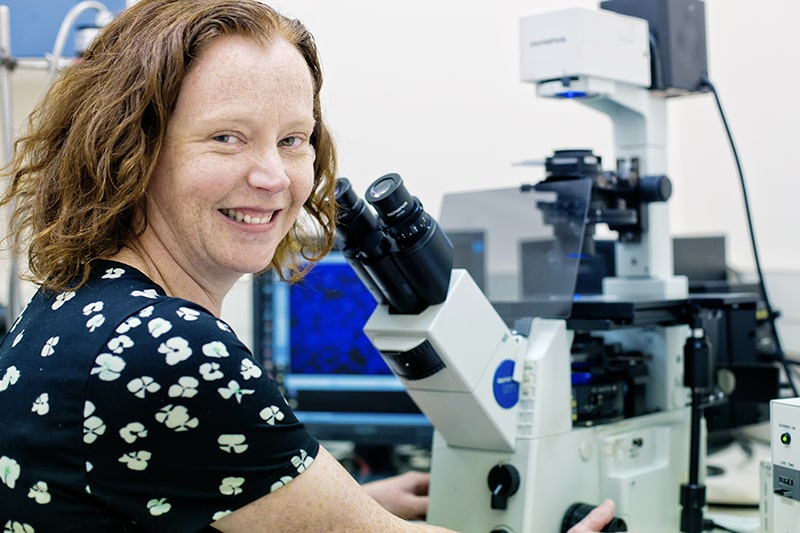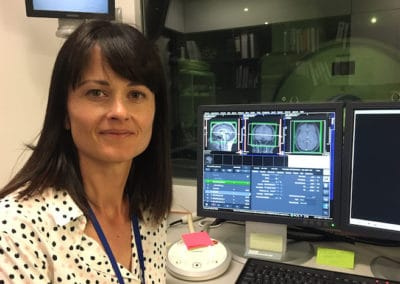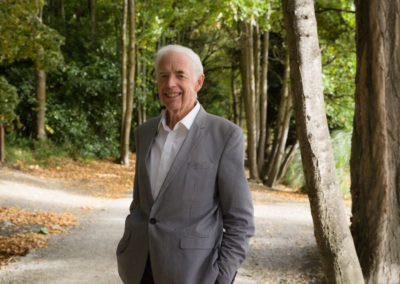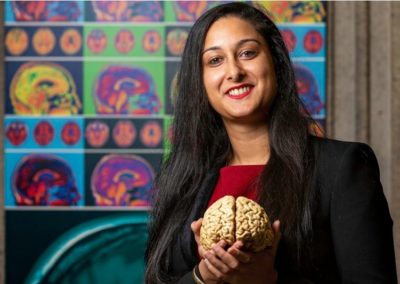Dr Louise Parr-Brownlie is a neurophysiologist, lecturer, and one of the few researchers in the world dedicated to researching optogenetics. Optogenetics is a technique that uses light to control the activity of cells in living tissue. These cells are genetically modified to express light-sensitive ion channels, and when those channels are activated by light they can either work to make the cell more active or to make it less active. Louise works with brain cells, neurons, and this technique gives her the ability to precisely control which cells in the brain are active at any given time during her experiments.
By working in collaboration with Dr Stephanie Hughes, a biochemist who handles the virus side of the optogenetics, Louise has been able to focus her research on the neural mechanisms that underlie voluntary movements and the movement deficits in Parkinson’s disease. “It’s great to bounce ideas off each other,” Louise says, “we have such different backgrounds and that makes us a strong team.”
Ultimately, Louise hopes that one day the activation or silencing of cells with the use of optogenetics could restore movement or settle down involuntary movement in patients with Parkinson’s disease. “What we’ve found already is that there are probably better ways to stimulate the brain compared to the deep brain stimulation that is currently used for patients,” Louise says. Deep brain stimulation uses electrodes which are implanted into the brain, and stimulates the areas around those electrodes with electricity. “The stimulation is applied in a very regular pattern, almost like a clock ticking, but brain cells don’t naturally work like that,” she says, “brain cells often have little patterns of activity, so what we did was use the optogenetic stimulation and replayed patterns of normal activity in the brain.”
“The technology is very specific,” Louise says, “you can choose to stimulate one type of brain cell and not activate any others, which should cause fewer side effects. We’re hoping to consolidate what we’ve learned and take this technology to the human brain in the future, to treat Parkinson’s disease patients.”



